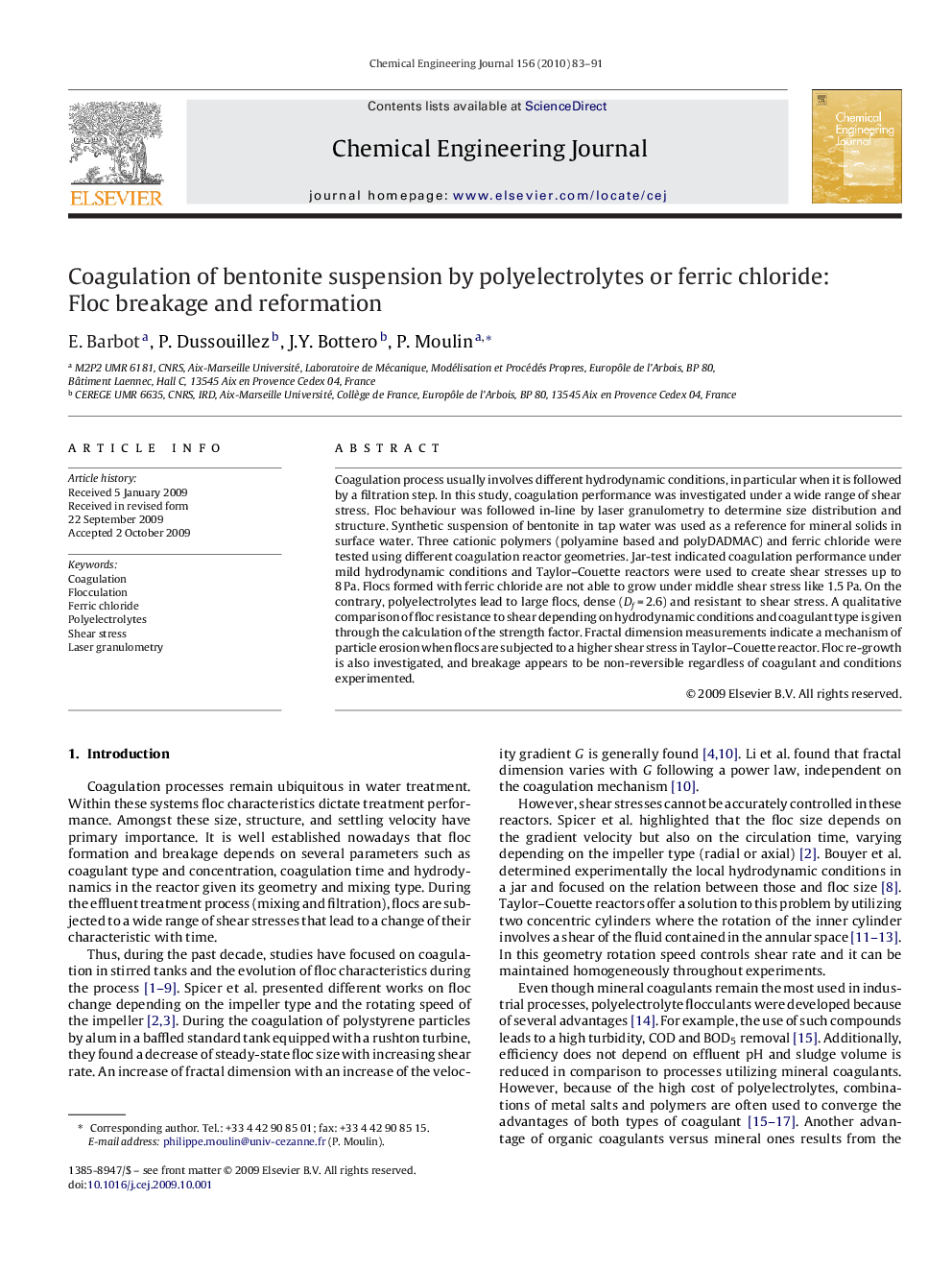| Article ID | Journal | Published Year | Pages | File Type |
|---|---|---|---|---|
| 153162 | Chemical Engineering Journal | 2010 | 9 Pages |
Coagulation process usually involves different hydrodynamic conditions, in particular when it is followed by a filtration step. In this study, coagulation performance was investigated under a wide range of shear stress. Floc behaviour was followed in-line by laser granulometry to determine size distribution and structure. Synthetic suspension of bentonite in tap water was used as a reference for mineral solids in surface water. Three cationic polymers (polyamine based and polyDADMAC) and ferric chloride were tested using different coagulation reactor geometries. Jar-test indicated coagulation performance under mild hydrodynamic conditions and Taylor–Couette reactors were used to create shear stresses up to 8 Pa. Flocs formed with ferric chloride are not able to grow under middle shear stress like 1.5 Pa. On the contrary, polyelectrolytes lead to large flocs, dense (Df = 2.6) and resistant to shear stress. A qualitative comparison of floc resistance to shear depending on hydrodynamic conditions and coagulant type is given through the calculation of the strength factor. Fractal dimension measurements indicate a mechanism of particle erosion when flocs are subjected to a higher shear stress in Taylor–Couette reactor. Floc re-growth is also investigated, and breakage appears to be non-reversible regardless of coagulant and conditions experimented.
